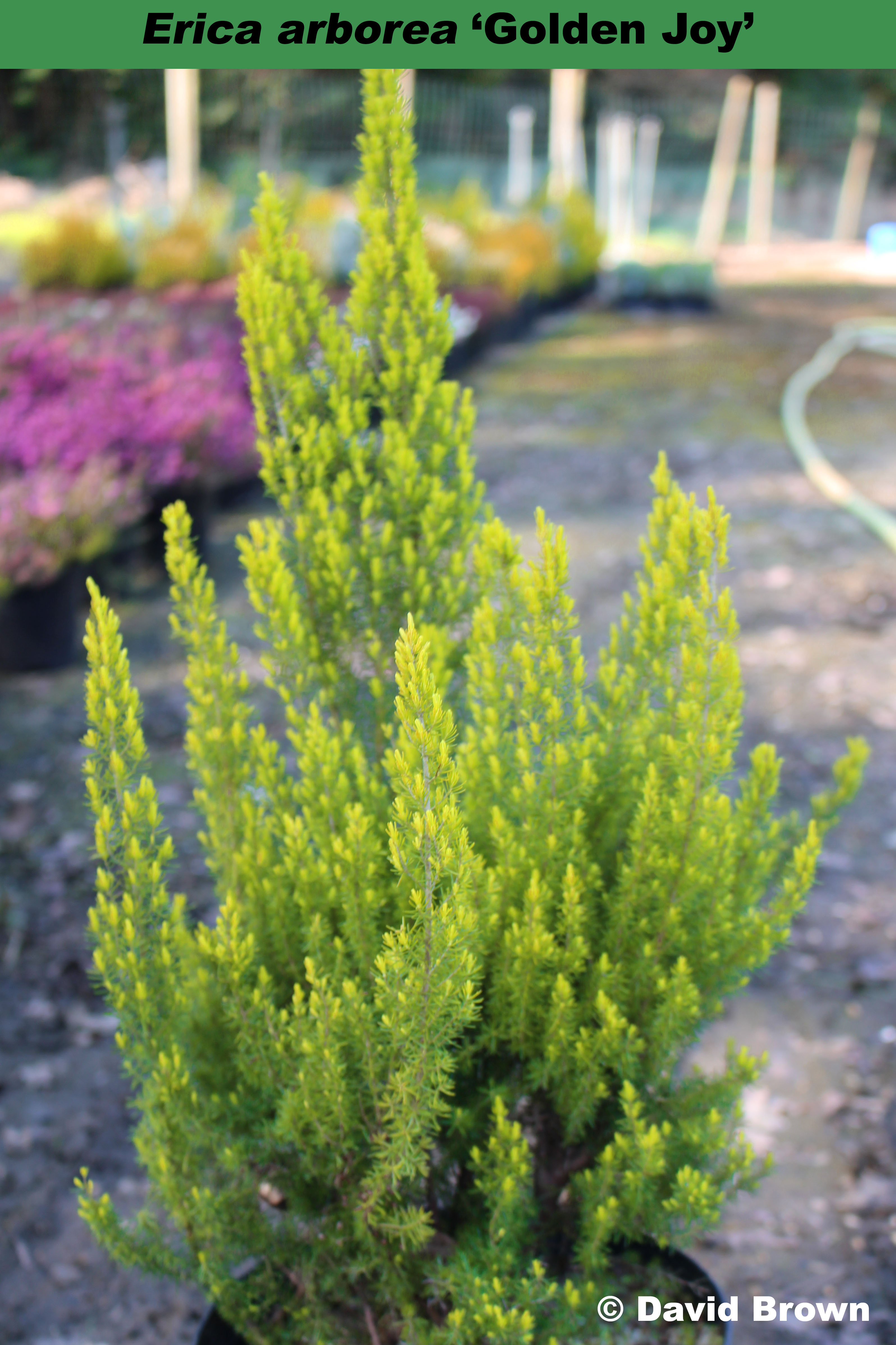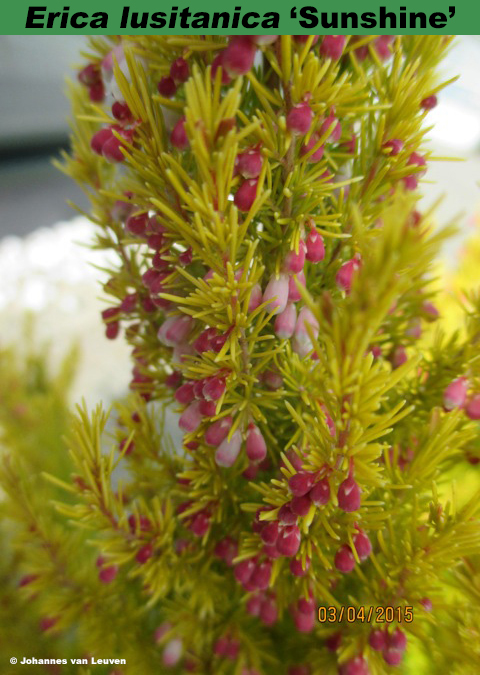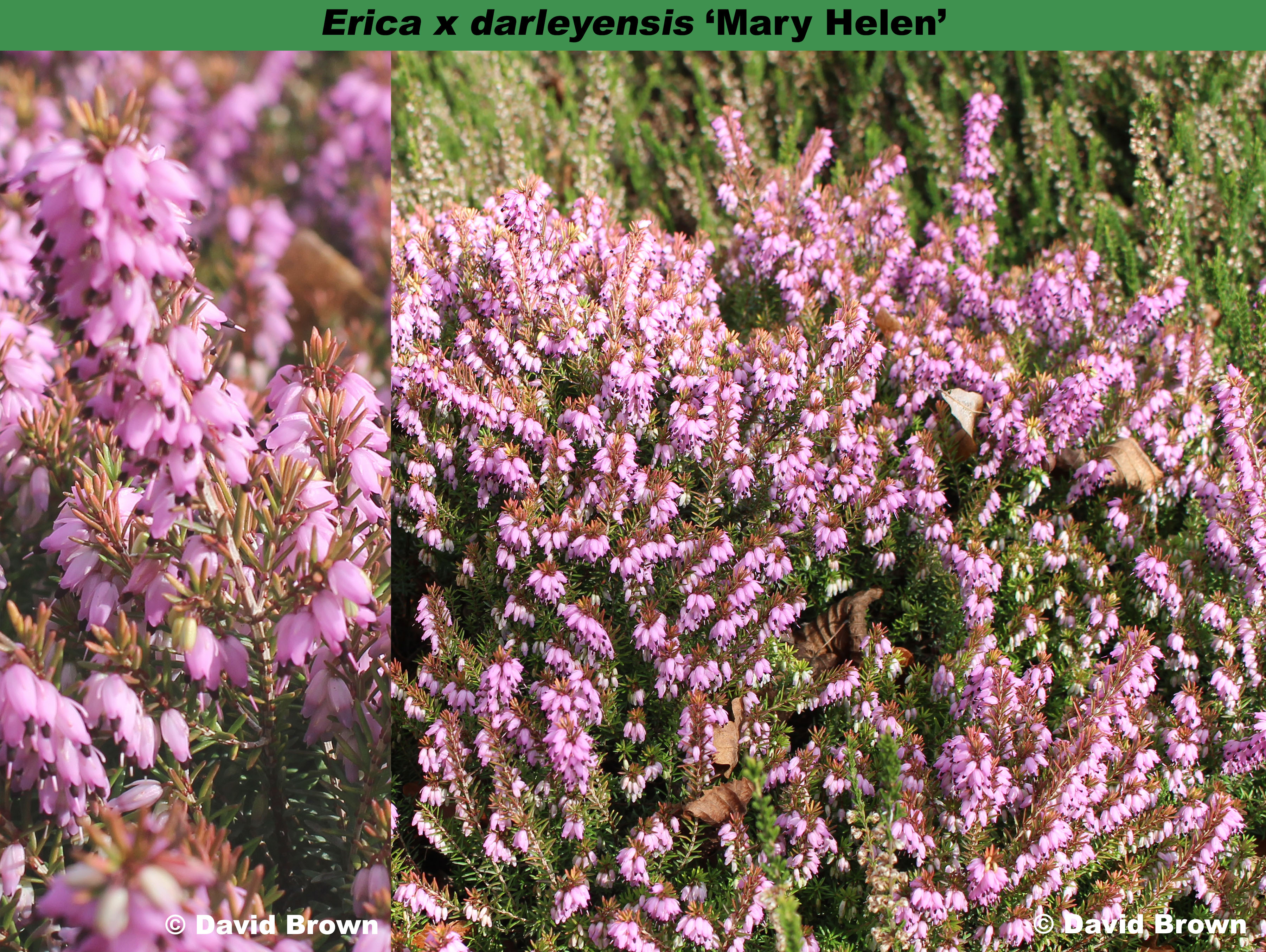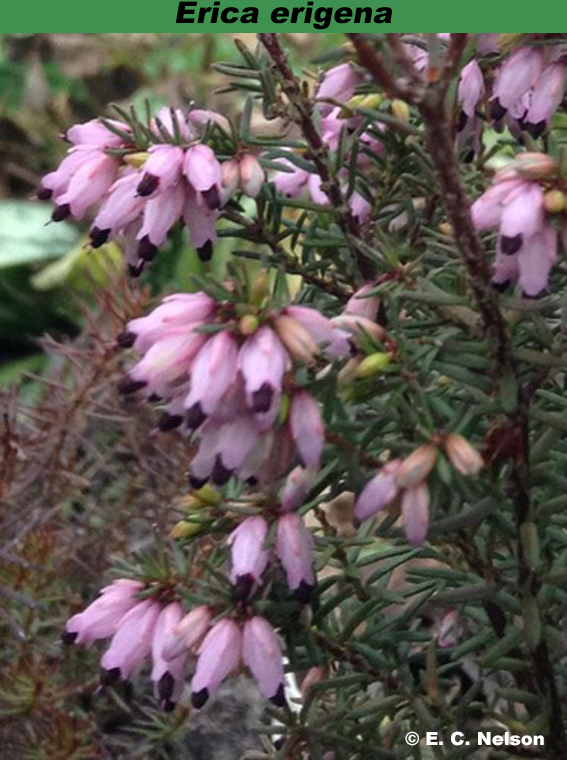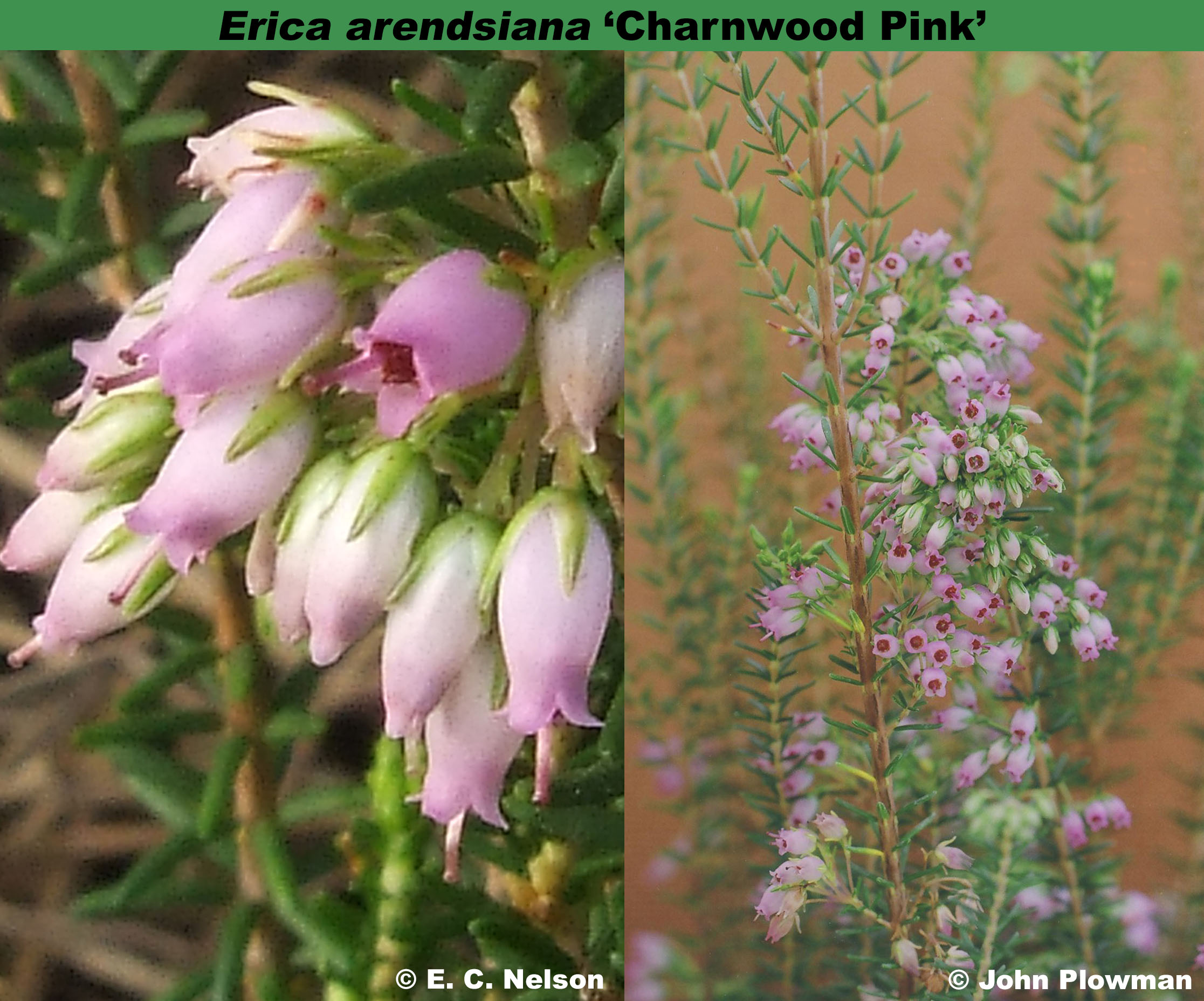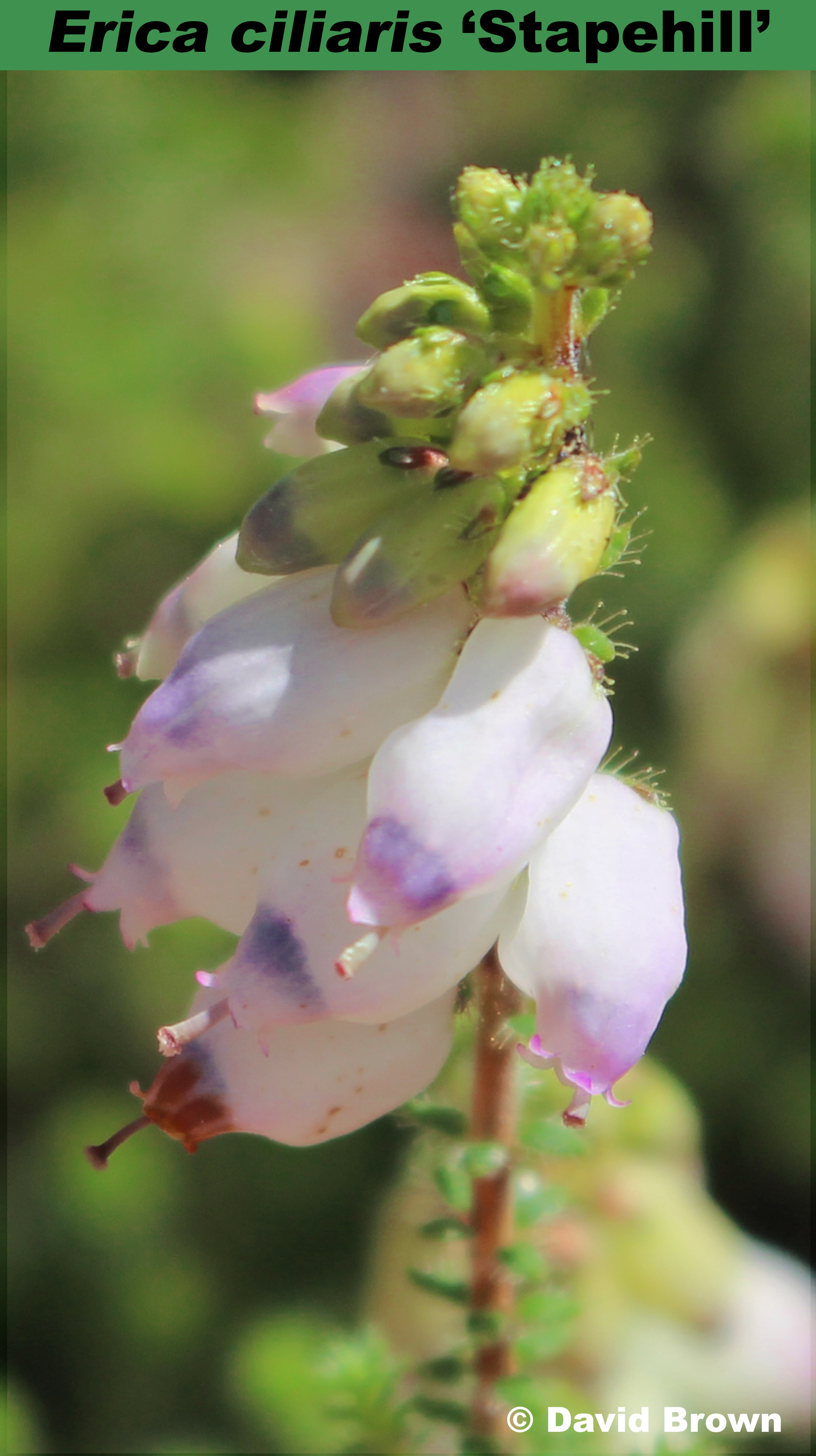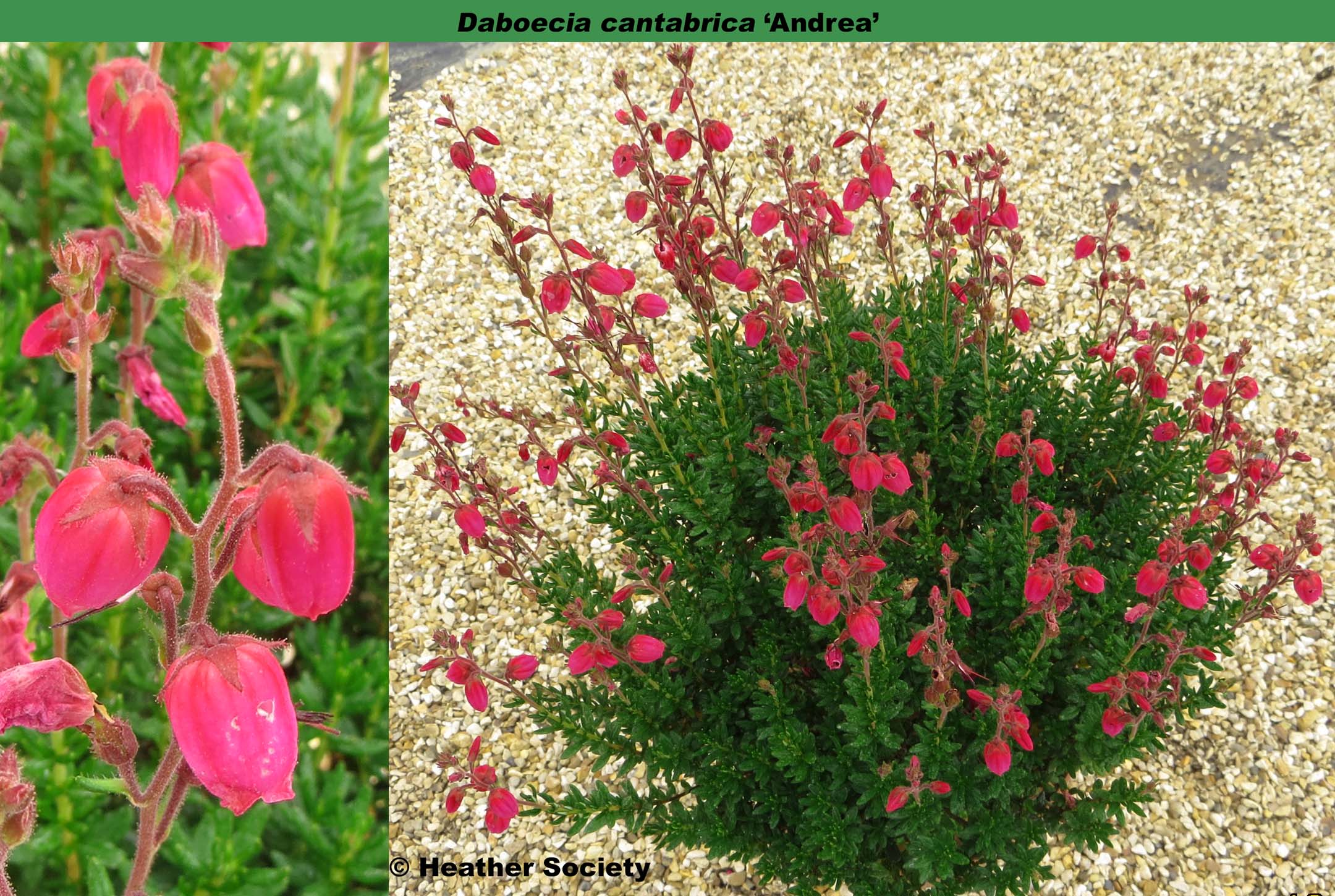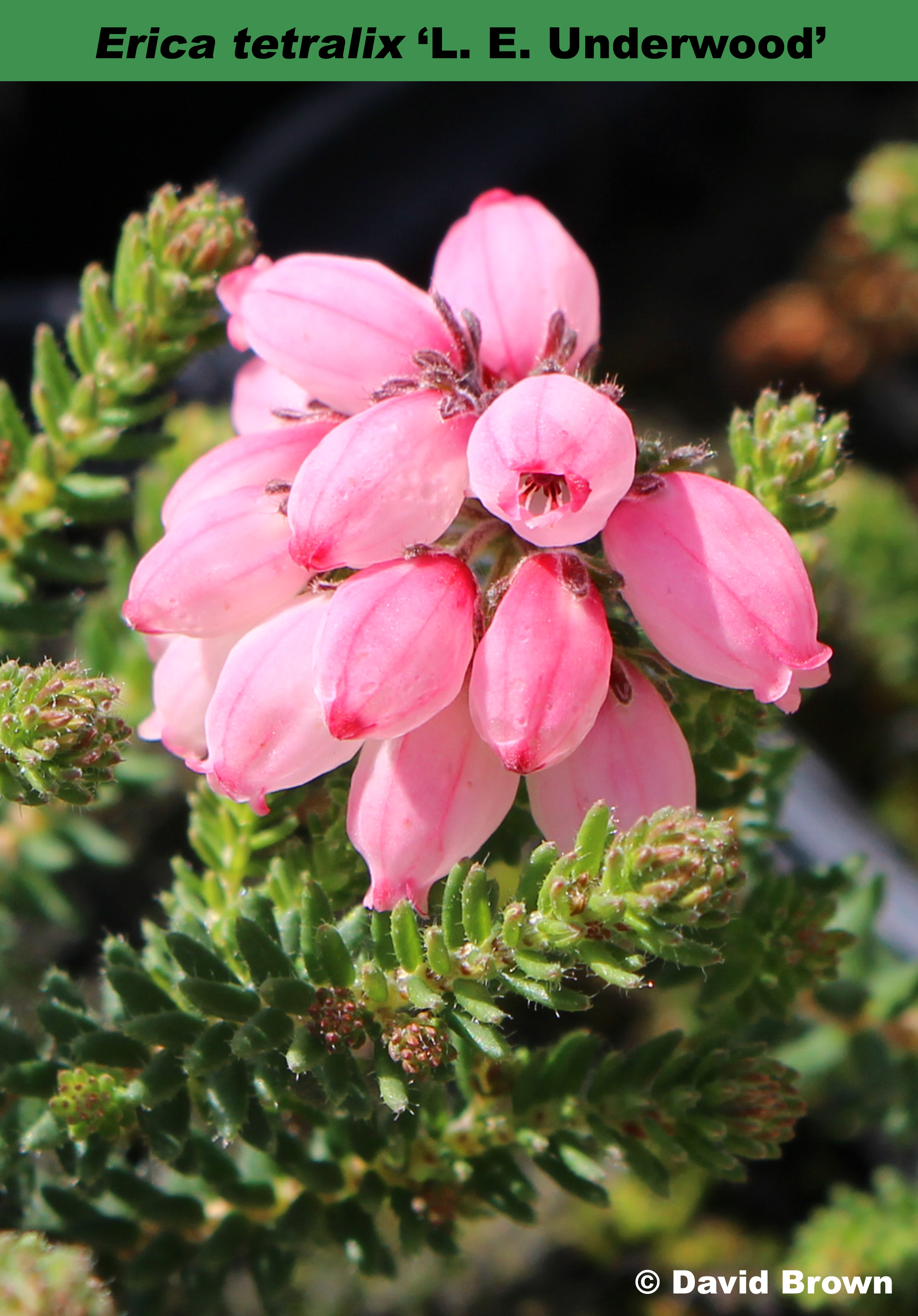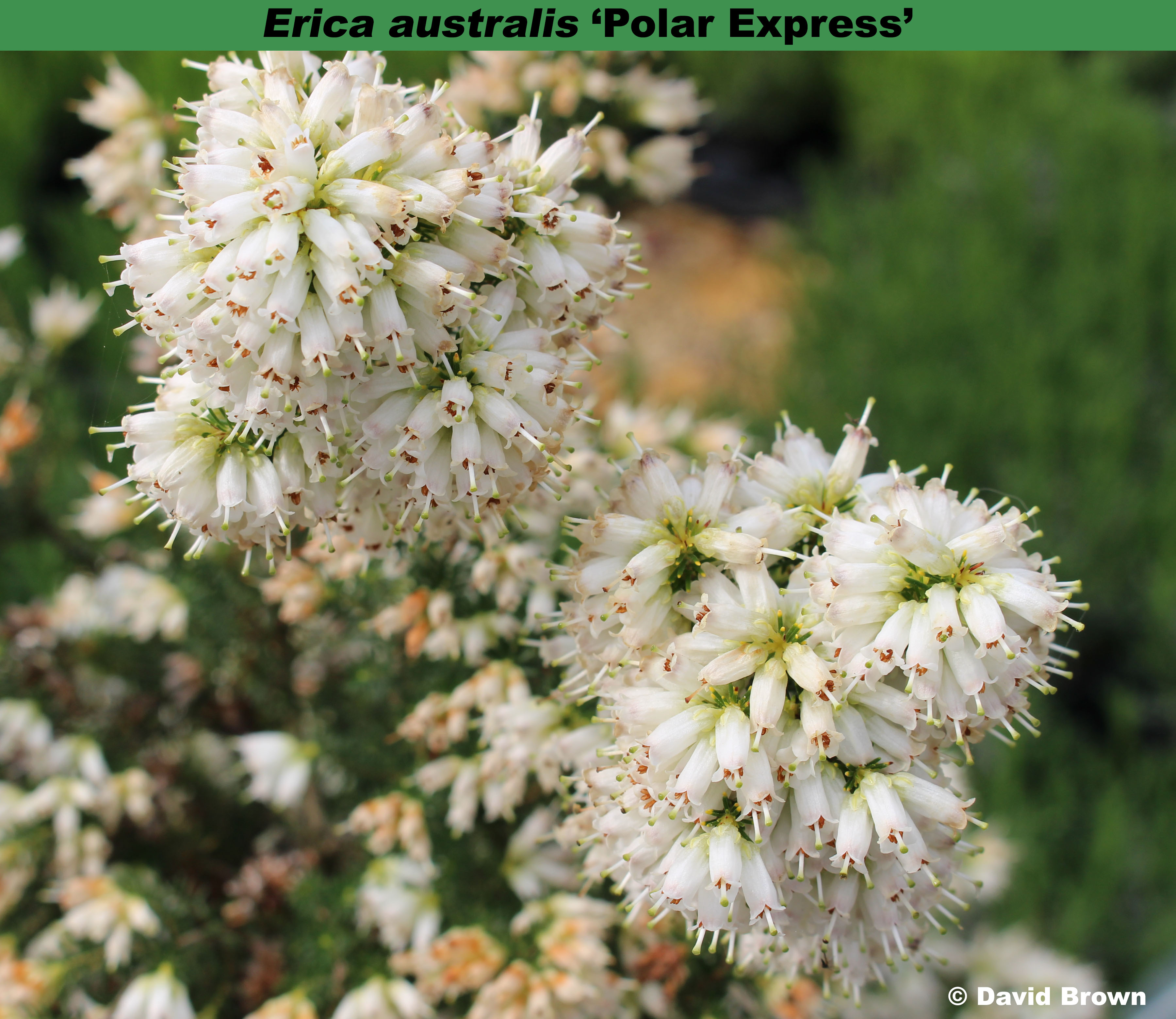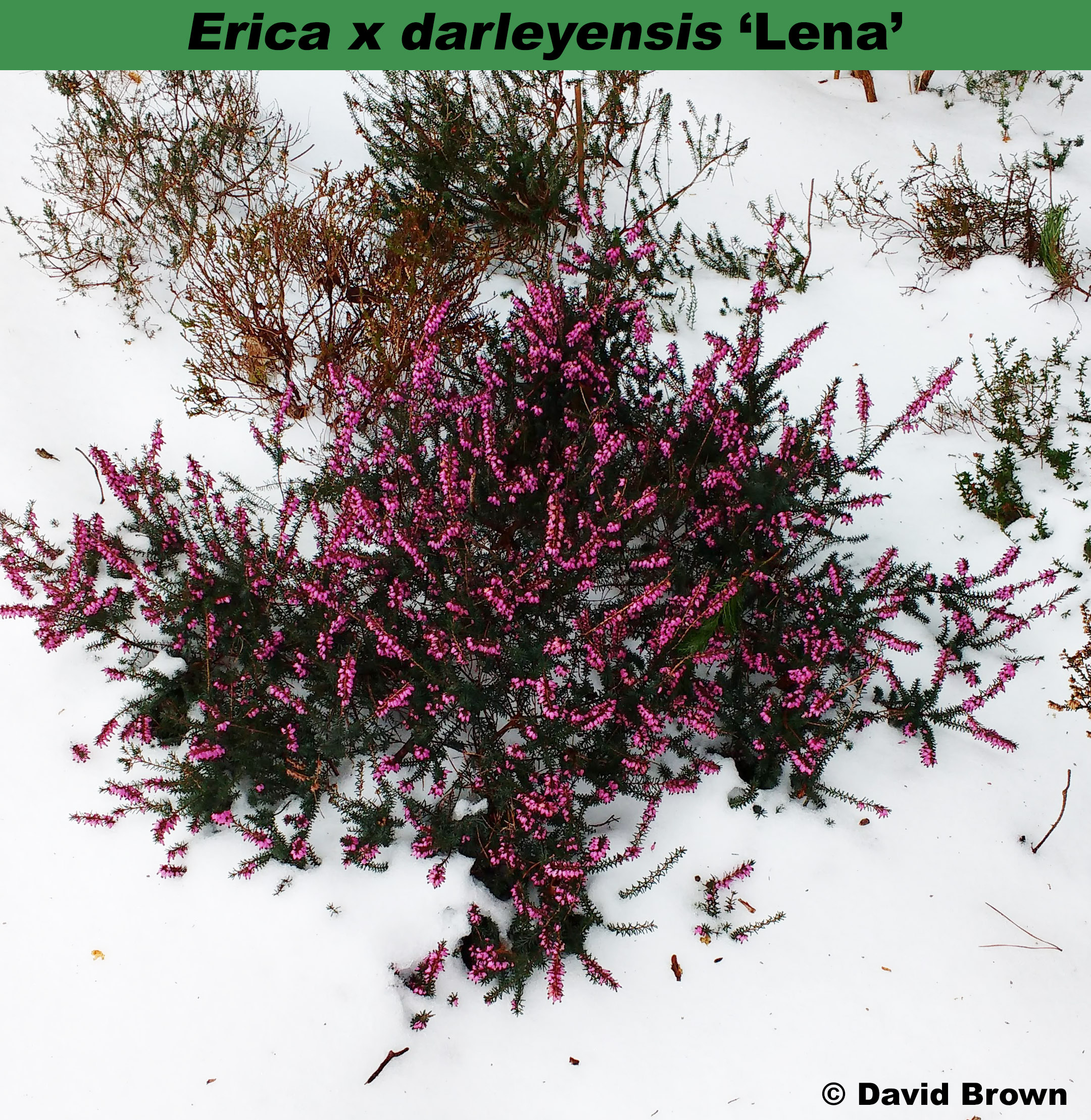Very nice bright yellow and tightly upright and distinct from ‘Estrella Gold‘; more floriferous than ‘Albert’s Gold‘ and easier to propagate.
Sport on Erica arborea ‘Alpina’, found by Chrystal Joy Gillingham in 2004 at Wilson’s Nursery Ltd, Chilliwack.
® E.2008:10 registered on 29 November 2008 by Wilson’s Nursery Ltd, Chilliwack, British Columbia, Canada.

